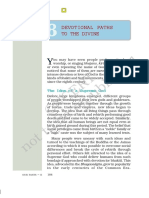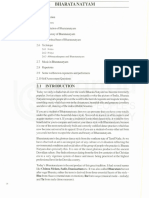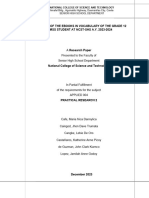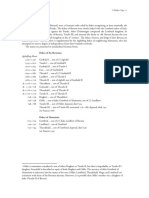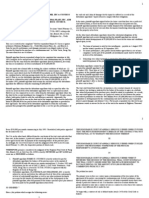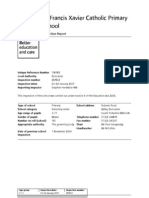Newar Community
Newar Community
Uploaded by
Abhishek S ThapaCopyright:
Available Formats
Newar Community
Newar Community
Uploaded by
Abhishek S ThapaOriginal Description:
Copyright
Available Formats
Share this document
Did you find this document useful?
Is this content inappropriate?
Copyright:
Available Formats
Newar Community
Newar Community
Uploaded by
Abhishek S ThapaCopyright:
Available Formats
the original inhabitants of the Kathmandu Valley, but their origins are shrouded in mystery speak a Tibeto-Burmese language,
which indicates they originated in the east Language known as Nepali Bharsa or Nepal bhaye responsible for the valley's superb art and architecture Malla kings, reign, particularly in the 1600's and 1700's, that many of the valley's finest temples and palaces were built They developed a division of labour and a sophisticated urban civilization According to Nepal's 2011 census, the 13,21,933 Newars , nation's sixth largest ethnic group
According to the 2001 Nepal Census, 84.13% of the Newars were Hindu and 15.31% were Buddhis Patan is the most Buddhist containing the four stupas Bhaktapur and kathmandu is primarily Hindu The major cults are Vajrayana Buddhism and Tantric Hinduism Hindus worship goddess(including living goddess Kumari) and Bhairav whereas Buddhists worship in stupas and at Swayumbhunath Jha , Shrestha , Rajopadhya are hindus where as Vajracharya,Shakya ,Urey are buddhists
According to their caste system
Newari brahmins- Jha, Bhatta ,Rajopadhyaya Kshatriya -Shrestha, Pradhan, Malla, Pradhananga, Joshi, Mool, Amatya, Maskey, Rajbanshi, Rajbhandari, etc
Gubhaju-Bare-the Gubhajus or Bajracharyas, and Bares or Shakyas
Uray -Tuladhar, Kansakar, Tamrakar, etc Jyapu group-Maharjan, Dangol, Awale, Prajapati, etc Ekthariya -Sayami, Kau, Naye, Chitrakar, etc
Newar religious culture is rich in ceremony and is marked by frequent festivals throughout the year.
Mohani(dashain) Ihi or Bel Bibaha
Gufa rakhney or Bara Tayegu ( marriage with sun)
Vintuna(new year),celebrated through doing Mha puja S Pru (Gai Jatra) Yenya (Indra Jatra)
Foods items include :
Kwti () kachil ( spiced minced meat) chhoyl,sekuwa wo ( lentil cake), paun kw ( sour soup) syen ( fried liver) bara mari ( sweets) Chatamari (newari pizza )
Drinks items include: Raksi Aila
Hyangu Thwon (similar
to red wine)
Kaa Thowon
Masked(Lakhe)dance,use of masks known as Dyah Pyakhan
Dhime(a drum played with a stick and a hand) dance
Ghtu (summer music)
Mohani (festive joy music )
Rjamati (music about young lovers)
Sitl Mju (music for children expelled from the Kathmandu Valley)
Macha Janku, the rice feeding ceremony, is performed at the age of six or eight months for boys and at the age of five or seven months for girls male child approaches puberty, the Kayta Puja, a rite of initiation, is performed For a female child, Ihi (also called Bel Bibaha) is performed between the ages of five to nine next ceremony is Baray when a girl approaches puberty. She is kept in a room for 12 days hidden from the sun
Janku is an old-age ceremony which is conducted when a person reaches the age of 77 years, seven months and seven days
After death,offerings and rituals are conducted four, seven, eight, 13 and 45 days following death and monthly for a year and then annually
social organization or simply a clan that is used to maintain the social order of Newar society
consists of a thakali or the eldest person of the guthi, for the formulation of most of the norms of the guthi traditionally a relation based on certain norms that are moderated by the guthi members maintaining a harmony in Newari society and in preventing anarchy
Thank you
You might also like
- Teacher Edition Reveal Math Integrated 3 Volume 2Document442 pagesTeacher Edition Reveal Math Integrated 3 Volume 2bazzawyNo ratings yet
- History of Indian Classical MusicDocument14 pagesHistory of Indian Classical MusicArastoo MihanNo ratings yet
- Lab Report Act.6Document6 pagesLab Report Act.6Pattrick Lintag100% (2)
- History of Indian MusicDocument17 pagesHistory of Indian Musicsugandha26_gemini100% (1)
- Cultural Presentation of NepalDocument28 pagesCultural Presentation of NepalRitika AdhikariNo ratings yet
- Shrepa Dance " Shyabru"Document7 pagesShrepa Dance " Shyabru"mksantosh550No ratings yet
- ROLE OF TEMPLES IN INDIAN MUSIC (AutoRecovered)Document3 pagesROLE OF TEMPLES IN INDIAN MUSIC (AutoRecovered)05331A0358No ratings yet
- Gess 108Document18 pagesGess 108James RajanNo ratings yet
- Hinduism: Reporter: Juvilyn Jugarap Jay TuayonDocument41 pagesHinduism: Reporter: Juvilyn Jugarap Jay Tuayonlaurice kathe insoNo ratings yet
- HinduismDocument45 pagesHinduismabergonzadoyna040No ratings yet
- Chap 1 MUSIC in KERALA May3Document41 pagesChap 1 MUSIC in KERALA May3DR.GANGA RAAMACHANDRANNo ratings yet
- Holi Festival of Colours: Navigation Search Akiko Kobayashi (Singer) Basanta Utsav (Film)Document25 pagesHoli Festival of Colours: Navigation Search Akiko Kobayashi (Singer) Basanta Utsav (Film)Kr PrajapatNo ratings yet
- Uttrakhand Culture: By-Pratyush Singh Rawat Class - 4 TH MoonDocument15 pagesUttrakhand Culture: By-Pratyush Singh Rawat Class - 4 TH Moonarjun rawatNo ratings yet
- 10 Nepal CultureDocument4 pages10 Nepal Cultureka989818No ratings yet
- Dance Notes For Half YearlyDocument7 pagesDance Notes For Half Yearly34 anaya mehta 8135No ratings yet
- Telangana Culture PDFDocument50 pagesTelangana Culture PDFrupender100% (2)
- Enugula Veeraswamy SJournal Kasiyatra CharitraDocument299 pagesEnugula Veeraswamy SJournal Kasiyatra CharitraBranko NikolicNo ratings yet
- South India CultureDocument20 pagesSouth India Culturedeeksha vermaNo ratings yet
- Fsbpaii Paper1 Pooja MandalDocument14 pagesFsbpaii Paper1 Pooja Mandalmandalpooja230No ratings yet
- Connecting Carolling and Nepalese Bhailo - DeusiDocument11 pagesConnecting Carolling and Nepalese Bhailo - DeusihazaelgomesNo ratings yet
- AlvarsDocument6 pagesAlvarsMurali Krishnan100% (1)
- IyengarsDocument20 pagesIyengarsT Sampath KumaranNo ratings yet
- HINDUISMDocument16 pagesHINDUISMrosatonggo280No ratings yet
- HinduismDocument45 pagesHinduismIsmurpp NikentNo ratings yet
- Hist7 - 8 - Devotional Paths To The Divine PDFDocument18 pagesHist7 - 8 - Devotional Paths To The Divine PDFRavi GarcharNo ratings yet
- Hinduism in Performing ArtsDocument16 pagesHinduism in Performing ArtsJinal RathodNo ratings yet
- Shodasa UpacharasDocument7 pagesShodasa UpacharasSathis Kumar100% (1)
- Garba DanceDocument3 pagesGarba DanceShivendra Dutt BansalNo ratings yet
- The Oran TribeDocument5 pagesThe Oran TribeDipanshu NagarNo ratings yet
- Music and Dance Traditions in Kerala Temple Iconography.1. DR Suvarna Nalapat TrustDocument61 pagesMusic and Dance Traditions in Kerala Temple Iconography.1. DR Suvarna Nalapat TrustDr Suvarna Nalapat100% (1)
- 12 AlwarsDocument61 pages12 AlwarsRaj Ram0% (1)
- SWAYAMBHUDocument5 pagesSWAYAMBHUperform the following steps Aluminum Z.No ratings yet
- Vedic Age Updated 36Document28 pagesVedic Age Updated 36nehaNo ratings yet
- The Vedic AgeDocument11 pagesThe Vedic AgeMr Binit PuspalakNo ratings yet
- Indian Music During Prevedic and Vedic TimeDocument17 pagesIndian Music During Prevedic and Vedic TimeGanesh PrasaiNo ratings yet
- Linga Purana-Books For All - Debroy, Bibek_Debroy, DipavaliDocument53 pagesLinga Purana-Books For All - Debroy, Bibek_Debroy, Dipavalimaheshmuralinair6No ratings yet
- The VedasDocument14 pagesThe Vedassumilshirvi239No ratings yet
- Living Rituals of Ancient KashmirDocument5 pagesLiving Rituals of Ancient KashmirADITYA AWASTHINo ratings yet
- Dance in IndiaDocument15 pagesDance in Indiakremlin23455No ratings yet
- AA - Vv. - Principles of Hindustani MusicDocument20 pagesAA - Vv. - Principles of Hindustani MusicGianfranco TinelliNo ratings yet
- HinduismDocument74 pagesHinduismCaesar AmigoNo ratings yet
- Kai ValyaDocument5 pagesKai Valyahjoshi1297No ratings yet
- Narayana Teer ThaDocument13 pagesNarayana Teer ThaAnonymous 4rMVkArNo ratings yet
- Structure: 2 6 1 Ritta 2 6 2 Nrit ADocument7 pagesStructure: 2 6 1 Ritta 2 6 2 Nrit Aspandana aNo ratings yet
- Vedic and Later Vedic AgeDocument33 pagesVedic and Later Vedic AgeSahil Raj RavenerNo ratings yet
- Durga Puja by Kanai L. Mukherjee, PH.DDocument181 pagesDurga Puja by Kanai L. Mukherjee, PH.DjaykalathilNo ratings yet
- Himalya's SadhusDocument19 pagesHimalya's Sadhusmundurao100% (1)
- Hinduism and MusicDocument9 pagesHinduism and MusicYuli ChakkNo ratings yet
- Virashaivism ShaktivishistadvaitaDocument4 pagesVirashaivism ShaktivishistadvaitaGeorgegeorgebNo ratings yet
- 061-Bhajans and Kiirtan in Indian MusicDocument6 pages061-Bhajans and Kiirtan in Indian MusicPierreclementeNo ratings yet
- EITK - FinalDocument18 pagesEITK - Finalsaloni saxenaNo ratings yet
- Learn NewariDocument124 pagesLearn NewariПракаш Раи50% (4)
- Ashutosh DRUPAD VARIOUS FORMDocument22 pagesAshutosh DRUPAD VARIOUS FORMkhalsaamanNo ratings yet
- Dharmic Religions: Sacred ScripturesDocument8 pagesDharmic Religions: Sacred Scriptureselie lucidoNo ratings yet
- BharatnatyamDocument19 pagesBharatnatyamAparajita SahaNo ratings yet
- Buddhist TermsDocument20 pagesBuddhist TermsRobin ChanNo ratings yet
- Women in Hindu DharmaDocument46 pagesWomen in Hindu Dharmakalyanaraman7100% (1)
- Indian Classic Dance Forms - IAS Culture Notes 2016 PDF DownloadDocument22 pagesIndian Classic Dance Forms - IAS Culture Notes 2016 PDF DownloadAbhishek TomarNo ratings yet
- Sounds of Innate Freedom: The Indian Texts of Mahamudra, Volume 4From EverandSounds of Innate Freedom: The Indian Texts of Mahamudra, Volume 4No ratings yet
- The Devil's DiscipleDocument4 pagesThe Devil's DiscipleTeodor MihaiNo ratings yet
- Forms of Business Org. CSRDocument9 pagesForms of Business Org. CSRBryan YaquitenNo ratings yet
- UntitledDocument18 pagesUntitledKing Jeblinx JosephNo ratings yet
- Dc16rn3523 CK Products SPAR Release 073.Xxx.086.15410Document19 pagesDc16rn3523 CK Products SPAR Release 073.Xxx.086.15410cristian_becheverriaNo ratings yet
- Bilal TarawihDocument5 pagesBilal TarawihdesaNo ratings yet
- MUST To KNOW in HematologyDocument45 pagesMUST To KNOW in HematologyDen100% (5)
- PH 1 Sem 2 Kel 10Document5 pagesPH 1 Sem 2 Kel 10Mahna zakiah nadhifNo ratings yet
- Procedures - Separation of The Silt and Clay Fractions by CentrifugationDocument3 pagesProcedures - Separation of The Silt and Clay Fractions by CentrifugationSudeep Chandra VarmaNo ratings yet
- Hartmann F. The Mathematical Foundation of Structural Mechanics. 1985. 371pDocument382 pagesHartmann F. The Mathematical Foundation of Structural Mechanics. 1985. 371pqazsNo ratings yet
- Khutbatul WadaDocument5 pagesKhutbatul WadaDiding NadikaNo ratings yet
- DND 5e DM Screen PDFDocument4 pagesDND 5e DM Screen PDFOliva MervzNo ratings yet
- Humss 121 - O6 (Group 6, Pr2)Document25 pagesHumss 121 - O6 (Group 6, Pr2)Maria Nica Dannylica CafeNo ratings yet
- Song The Hall of Fame Activities Promoting Classroom Dynamics Group Form - 43976Document2 pagesSong The Hall of Fame Activities Promoting Classroom Dynamics Group Form - 43976lizandrewNo ratings yet
- EE200 SSN Sandhan L06 RemovedDocument44 pagesEE200 SSN Sandhan L06 RemovedshreyaiotaNo ratings yet
- TOPIC - Management of Challenged ChildrenDocument20 pagesTOPIC - Management of Challenged ChildrenDinesh Khinchi80% (5)
- B.e.ece Syllabus RoboticsDocument87 pagesB.e.ece Syllabus Roboticsanand787No ratings yet
- Limits of Expressions InvolvingDocument27 pagesLimits of Expressions InvolvingNina HendreiNo ratings yet
- Rizal's Life Higher Education and Life Abroad and Rizal's Life Exile, Trial, and DeathDocument34 pagesRizal's Life Higher Education and Life Abroad and Rizal's Life Exile, Trial, and DeathHiro ZuzuNo ratings yet
- LAS 2 Quarter 2 Learning Activity Sheet (Las) in Disciplines and Ideas in Social Sciences (Diss)Document4 pagesLAS 2 Quarter 2 Learning Activity Sheet (Las) in Disciplines and Ideas in Social Sciences (Diss)Cokiemenia Lusarita100% (2)
- Document AcknowledgementDocument7 pagesDocument AcknowledgementLea SantueleNo ratings yet
- Vocab CH 5 PDFDocument4 pagesVocab CH 5 PDFcvofoxNo ratings yet
- Bavarian RulersDocument1 pageBavarian RulersSinisa MirozovNo ratings yet
- Final Exam in English 9Document7 pagesFinal Exam in English 9Skyler AzureNo ratings yet
- 30 G.R. No. 147405 April 25, 2006 Platinum Plans Phil. Inc Vs CucuecoDocument6 pages30 G.R. No. 147405 April 25, 2006 Platinum Plans Phil. Inc Vs CucuecorodolfoverdidajrNo ratings yet
- ST Francis Xavier Catholic Primary SchoolDocument11 pagesST Francis Xavier Catholic Primary SchoolxavierwebadminNo ratings yet
- So Will IDocument1 pageSo Will Isheena joyce velzaNo ratings yet
- SudokuDocument2 pagesSudokuSruthy S. KhanNo ratings yet
- Folleto de Las Características Del Programa de FormaciónDocument2 pagesFolleto de Las Características Del Programa de FormaciónacilegnaNo ratings yet







